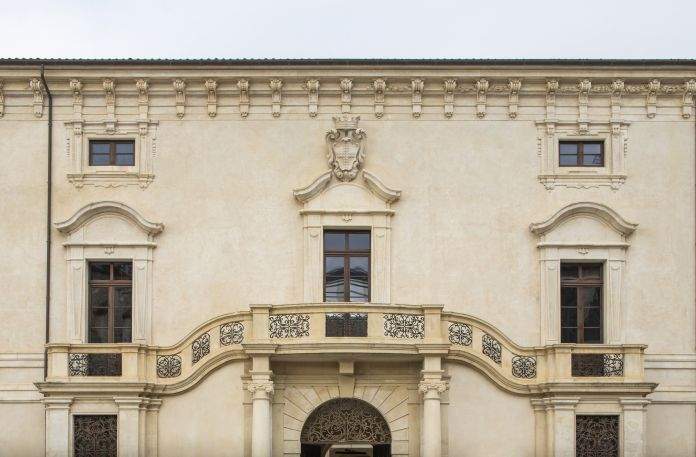L'Aquila, a new museum is born: it's MAXXI L'Aquila at Palazzo Ardinghelli
A new museum is born in L ’ Aquila: it is the MAXXI L’Aquila, a sort of “branch” of the MAXXI in Rome, a contemporary art museum presented as a “laboratory dedicated to artistic and cultural production open to the territory and its energies” and as a “space where MAXXI’s art, architecture and photography collections will come to life together with temporary exhibitions, in-depth programs and educational projects.” The new museum opened for a preview yesterday, Sept. 5, with a special tour in the reclaimed spaces of Palazzo Ardinghelli, just steps away from the city’s iconic 99 Cannelle Fountain. The palace was designed between 1732 and 1743 by one of the most important Roman architects of the time, Francesco Fontana, son of the better-known Carlo, and is characterized by its façade in late Baroque compound style, its courtyard and its monumental staircase in the Borromini taste, frescoed in 1749 by Venetian painter Vincenzo Damini. The date for the official opening, however, is set for Oct. 30.
MAXXI L’Aquila will be, the museum says, “a pole capable of weaving networks at different levels among the protagonists of contemporary art and among the subjects operating in the multifaceted artistic and scientific system (galleries, foundations, associations, other museums and research institutes) giving voice to the excellence of national and international creativity.” Like the MAXXI in Rome, the one in L’Aquila will host art, photography and architecture exhibitions, performances, site-specific interventions, and there will be space for works from the MAXXI Collection. The first project will involve some important contemporary Italian artists, namely Elisabetta Benassi, Daniela De Lorenzo, Alberto Garutti, Nunzio, Ettore Spalletti, young Russian artist Anastasia Potemkina, and photographers Paolo Pellegrin and Stefano Cerio.
Its premises have just been restored after damage sustained in the 2009 earthquake, which had caused major damage to the building. The restoration was supported by the Russian government. “A jewel of civil architecture in L’Aquila, given back to the city, to become, thanks to MAXXI, a reference point for the cultural life and social rebirth of L’Aquila and its territory,” says Stefano D’Amico, MiBACT regional secretary for Abruzzo. “In the complex reconstruction that we have been engaged in for more than a decade,” says Alessandra Vittorini, superintendent of L’Aquila, on the other hand, “this place now offers its unseen wonders fully recovered thanks to a careful and rigorous restoration.”
“The reopening of Palazzo Ardinghelli excites me and makes me proud,” says Giovanna Melandri, president of MAXXI: “it is the symbol of a double rebirth, from the wounds of the earthquake and from the suspended time of the coronavirus emergency.” “The restitution of Palazzo Ardinghelli to the community and the establishment of the L’Aquila branch of MAXXI,” points out Pierluigi Biondi, mayor of L’Aquila, “mark a turning point in the path of rebirth undertaken in the aftermath of the 2009 earthquake.” Of the same opinion is Marco Marsilio, president of the Abruzzo Region: “With the restoration of Palazzo Ardinghelli, the city of L’Aquila and Abruzzo are placing themselves at national and international attention as a qualified and lively reference point for the cultural life of our country.”
“This is a day full of meaning, in which an important signal arrives under the banner of culture, art, and beauty: we give back to L’Aquila and its citizens a wonderful palace,” said Anna Laura Orrico, undersecretary for cultural heritage. “It is a satisfaction,” Sergey Razov, Russian ambassador to Italy, echoed her, “to know that Russia has contributed to this good and necessary cause. I am grateful to all those who contributed to this project, a symbol of the friendship between our countries.”
Pictured: L’Aquila, Palazzo Ardinghelli after restoration. Ph. Credit Andrea Jemolo
 |
| L'Aquila, a new museum is born: it's MAXXI L'Aquila at Palazzo Ardinghelli |
Warning: the translation into English of the original Italian article was created using automatic tools. We undertake to review all articles, but we do not guarantee the total absence of inaccuracies in the translation due to the program. You can find the original by clicking on the ITA button. If you find any mistake,please contact us.



























